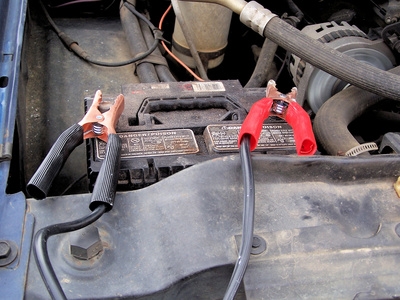
Direct current battery cables carry electrical current in a circuit. The electricity flows away from the positive terminal and back into the battery through the negative terminal. As electricity moves through the cables, the amperage (or strength of the electrical current) creates heat. The greater the total distance the electrical current travels, the more heat is generated in the cable. Amperage and the total length of the electrical current are used when determining the diameter of the cable used.
Use wire cutters to cut the battery cable at the point the cable will be extended. Strip (remove any plastic coating or insulating) the battery cable until sufficient metal is exposed to insert into the terminal connector.
Align a two terminal end connector, or wire connector, with the two wires to be connected. Insert the the bare wire end of the battery cable connection into one side of the two terminal connector.
Slide the extension cable into the remaining open end of the two terminal connector. Using the provided bolts or clamps, secure the two terminal connector to both the battery cable and the extension cable.
Wrap the extension terminal cable connector with electrical tape until both the battery cable and the extension cable ends -- which were inserted into the two terminal connector -- are covered.